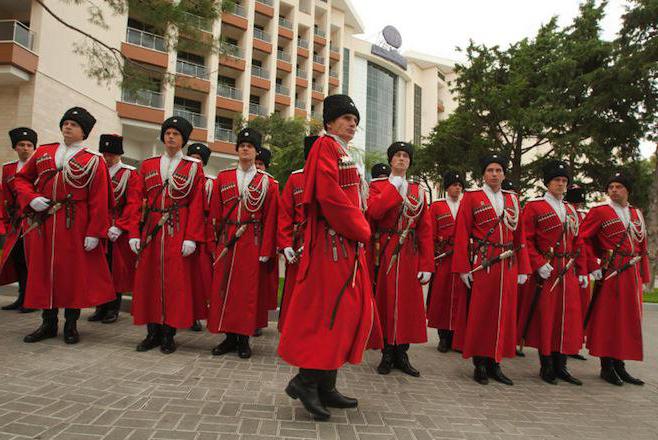The word "corporation" for most of us is associated with a meeting of wealthy shareholders of an enterprise who want to make this enterprise a monopolist in their industry.
In fact, corporations are created not only for the purpose of obtaining monetary profit. Various public organizations and partnerships are also often based on a corporate way of organizing activities. They fit the definition of nonprofit corporate organizations. They can also be called NPOs. This article will explain what nonprofit corporate organizations are. The concept and types will be presented below.
We will also get acquainted with regulatory documents. The Federal Law "On Non-Profit Organizations" implies 6 types of similar structures.
Corporate Governance Overview
A corporation (commercial and non-commercial) means an association or union of persons having common goals and striving to realize them. The corporate system implies:
- strict hierarchy within its own structure;
- authoritarianism of government;
- submission to the principle of majority (seniority) at the time of making important decisions;
- Strictly regulated and standardized internal activities of a corporate organization.
Entrance and access to the corporation is always limited by certain conditions.
One of the main features of the corporate form of management is the existence of a higher collegial body (meeting, congress, etc.). This way of organizing activities is very convenient for large enterprises. In this case, we can talk about a commercial corporation. But it is also suitable for creating non-profit corporate organizations that do not set as their primary goal the receipt of financial resources.
Consumer cooperative
The first type of non-profit corporation Federal Law "On Non-Profit Organizations" calls the consumer organization.
Consumer cooperatives are associations of interest holders, shareholders who have equal rights in the organization, regardless of the size of their own contribution. The equal rights of all members of the consumer society are its obvious plus.
The purpose of creating such circles is the satisfaction of a need (often material). A way to achieve this goal is to pool resources.
The availability of a monetary fund is a prerequisite for the existence of such a cooperative. Also, any consumer cooperative should have a charter, which contains information on the contributions of shareholders, the procedure for making them.
The most common types of consumer non-profit organizations are called: garage and country cooperatives, housing, credit, etc.
If desired, the participants of the organization, a consumer cooperative can be reorganized into a public organization, for example. The housing cooperative can be renamed TSN, a mutual insurance company into an insurance organization.
Legal entities and individuals over the age of 16 (sometimes 18) may be members of a consumer corporate organization.
Social organization
This is an association of people based on voluntary principles and principles of membership.The purpose of creating such an organization is most often the achievement of any results in the spiritual and social spheres, the dissemination of their own ideas in society, etc.
The rights of a legal entity are assigned to the elected governing body of such a nonprofit corporate organization. The powers of the governing body may be terminated by a common decision of the members of the organization ahead of schedule.
Legal and physical persons can be accepted as members of a public organization. Any member of the organization can freely leave its membership at any time. The number of founders must be at least 3.
All property assigned to a public organization is managed by herself. Its members do not have property rights to material goods belonging to her.
An organization of this kind can be reorganized into a foundation, union or association.
One of the most famous such organizations in Russia can be considered Rusfond, ONF, ROI.
Association and Union
An association, unlike a public organization and a consumer society, can be based not only on voluntary, but also on compulsory membership. An association may also be an association of legal entities creating an organization to manage their business activities. Citizens of the Russian Federation can also be members of the association. Most often, unions are created to protect their professional interests. The union may answer for its duties with its own property.
The association is headed not by a collegial body, but by a sole leader, for example, the president of the association. Collegiate meetings can also be created to help him.
Associations and unions provide for the payment of membership dues, which each participant must pay. Any member of the union may withdraw from it voluntarily, or may be expelled from the union. An association may be reorganized into a foundation or public organization.
TSN
Another type of nonprofit corporate organization is a partnership of real estate owners. Most often, it is created in apartment buildings and unites their residents. TSN differs from the consumer cooperative in that, firstly, for its creation, the consent of all tenants without exception is necessary; secondly, the votes of TSN participants are not equal, but depend on the size of their property (most often square meters in a house).
The creation of TSN provides for the selection of one sole manager (chairman), as well as a collegial body. TSN may be re-registered as a cooperative.
Cossack societies
A Cossack community can also be called a non-profit public organization if this society is included in a special register of Cossack associations in Russia. These societies are created with the goal of preserving the traditional way of life of the Russian Cossacks, preserving the culture of this estate. Such an organization can be transformed into an association.
Communities of Indigenous Peoples of the Russian Federation
Such a non-profit organization can be created on a territorial and blood basis. The organization's goal is to preserve the traditional way of life in a certain territory of the Russian Federation.

In the event of the collapse or liquidation of the community, each member has the right to a part of the community property. A popular community, at the request of its members, can be transformed into an association.
Fundamentals of Nonprofit Corporate Organizations
Regardless of the type of nonprofit organization, Russian law identifies several unifying features for such companies.
Art. 123.1 of the Civil Code of the Russian Federation states that any corporate organization must be registered as a legal entity and fulfill its obligations. The next feature is the goal of the team: a nonprofit organization is not created for the purpose of earning. True, the activities of such communities can be profitable.If the management of the organization has the right to membership in it, then the income brought by the organization cannot go into the pocket of its members. Such communities cannot be created by decree from above; the emergence of a public organization or TSN is the result of a joint decision of its founders. Each corporate structure should have a governing body that approves the organization’s charter. Ownership of the organization’s property is limited to the corporation itself.
